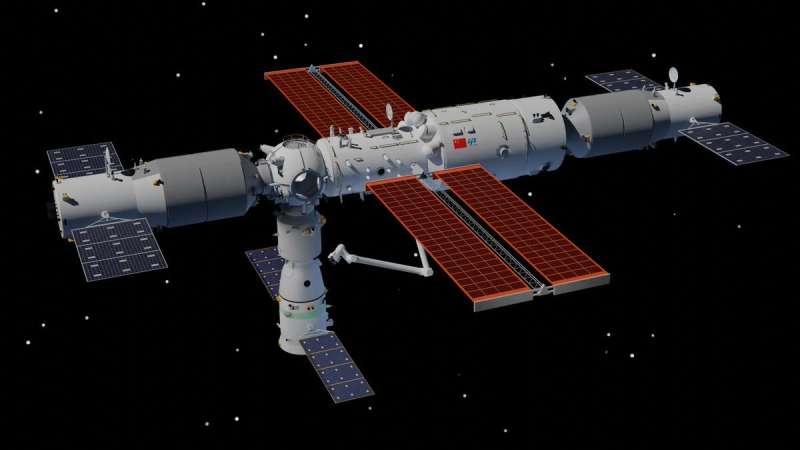Here's what China is planning to do in space for the next five years

Central planning is literately central to any communist country, though its history has mixed results. As part of that planning, bureaucrats in all parts of the government are occasionally tasked with coming up with goals and milestones for their specific part of the government. These usually take the form of a five- or 10-year plan, which is what the China National Space Agency (CNSA) released on January 28.
This is the fifth such report, with previous releases in 2000, 2006, 2011 and 2016, and the current plans for future space exploration build on the efforts of the past plans. At more than 7,500 words, the document itself is hefty but still a relatively high-level overview of what the agency hopes to achieve. Some main focal points include improving the sustainability of their rocket launches, improving their global position system, partnering with Russia on lunar exploration, maintaining and expanding the Tiangong space station, researching the underlying technology for a Mars sample return mission, and building a global partnership to build a research station on the moon.
The Long March rocket is China's workhorse rocket, and in the next five years, it should see an environmental improvement, making them pollution-free soon. In addition, CNSA plans to develop an additional fleet of rockets that can respond to the "growing need for regular launches," according to the white paper. This would include reusable systems and upper stages that can reenter the atmosphere.
Launching above the atmosphere is key to any global positioning system, which CNSA also plans to improve dramatically in the next five years. BeiDou is CNSA's answer to GPS and includes satellites for remote sensing and environmental monitoring. Improvements in its positioning accuracy and setting up communications relays are wrapped into the five-year plan. Pure scientific satellites will not be left behind, though, with plans to launch the Xuntian telescope in the next five years, with capabilities about equivalent to Hubble.
Scientific endeavors won't be limited to space, either. Plenty of lunar exploration is in China's future, with Chang'e 6, 7, and 8 undergoing development and eventually launching in the next five years. With some help from Russia, CNSA hopes to complete another lunar return sample mission and research the lunar polar regions by "hopping" around them. As part of the Sino-Russian Joint Data Center for Lunar and Deep-space Exploration, CNSA hopes to mutually develop plenty of lunar capabilities in the coming years.
It may go alone on other scientific endeavors, though, including the ongoing growth of the Tiangong space station. Having successfully launched in April last year, the Tianhe Core module will join the Wentian and Mengtian Laboratory Cabin Modules over the next five years. Expanding the station's capabilities will play a significant role in the agency's operations over the next five years. However, detailed descriptions of what they do will do with it were strangely absent from the white paper.
Clearly described in the white paper is China's desire to continue and expand its ability to explore the red planet. Over the next five years, CNSA plans to improve its infrastructural ability to support missions around Mars, including by strengthening deep-space communications and developing the underlying technology for a sample return mission. That most likely won't launch in the next five years, but even with that timeline, it could potentially be competing with NASA's Mars Sample Return mission in a race to get the first material back to Earth from Mars.
Despite any hints at a second space race, CNSA also stressed the importance of collaborating with other countries as part of an international effort to build a research station on the moon, among other advancements. An entire subsection of the white paper is devoted to international cooperation and stresses the need for global governance as a basis for continued national space exploration efforts.
Our understanding as a species should benefit no matter who is exploring, so the scientific community will likely welcome any further investment in space exploration by China or any other country. If CNSA successfully implements its latest five-year plan, not only will there be much more scientific data available, but the agency will be well placed to reach even further towards the stars in the next five years.
Provided by Universe Today





















